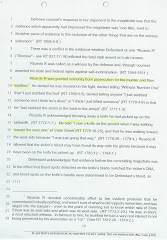Larry
Military begins voluntary evacuation of families in Japan
The Navy said Thursday afternoon it would start evacuating families from Naval Air Facility Atsugi and Yokosuka Naval Base, near Tokyo. A few hours later, officials at Misawa Air Base, in northern Japan, did the same. Camp Zama, a U.S. Army facility near Tokyo, said it was allowing families and non-essential workers to voluntarily leave.
In a radio address Thursday afternoon, Col. Otto Feather, 374th Airlift Wing commander, said he expects Yokota Air Base to join the list soon.
“For those folks that really want to go, I think we’re going to be able to offer an opportunity in the next couple of days, or so, to make that happen,” Feather said in a release on the Yokota website.
Marine Corps Air Station Iwakuni near Hiroshima and Sasebo Naval Base near Nagasaki said there were no plans to evacuate Thursday evening.
The evacuations come amid concerns among residents that radiation from the damaged Fukushima Dai-ichi nuclear power plant will spread south to Yokosuka and Atsugi, which are about 200 miles from the damage site. The reactors began failing shortly after Friday’s 9.0 magnitude earthquake.
At Atsugi and Yokosuka, families of emergency first responders and deployed sailors will be the first to evacuate, according to Navy command officials involved in the emergency meetings.
As of Thursday afternoon, the plan was to evacuate families on buses, then transfer them onto planes at Atsugi and Narita International Airport. The only flight currently planned to go to South Korea is one with State Deptartment officials, a military command official briefed on voluntary evacuation plans said at 8:30 p.m. on Thursday. Flights for military family members will go straight to the United States, the official said.
The evacuations could start Thursday night, or Friday morning at the latest, officials say.
The Navy already has the capabilities of evacuating up to 10,000 people per day. If the Navy can secure the additional aircraft, it would be able to bump that number to 18,000 per day.
There are about 25,000 people at Yokosuka Naval Base, roughly 19,000 who are Americans or family members with Defense Department ID cards. There are 6,500 people at Atsugi, though the number of Americans wasn’t immediately available at press time.
“The order of departure: Women and children first, non-essential person second, essential personnel third, and then me,” Gardner said during a broadcast on the base command channel.
Military officials told families wishing to leave Japan to make sure they have all necessary documents before trying to board the plane.
The documents – known as a Noncombatant Evacuation Operation packet – include:






3 comments:
This is a VOLUNTARY movement of DoD dependants. Which means that Active Duty personnel and DoD personnel will remain. The radiation at bases are still at safe levels and they are allowing people to leave voluntarily while travel is better available. Many people are staying behind until they are ordered a Mandatory Evacuation. Unfortunately, if you wear a uniform, you are not going to be evacuated.
Where is your son? I am currently in Yokohama and radiation levels are no where near where they need to be for a full on evacuation. "They" are currently Planning for a voluntary evacuation but it is rapidly turning into a major CLUSTER F-.
My Son Manuel Mendoza is at the Naval Air Facility Atsugi. Based on last weeks announcement of an evacuation I surprises me that there is no follow up story's by the media with video footage. Thank You for your comment.
Post a Comment